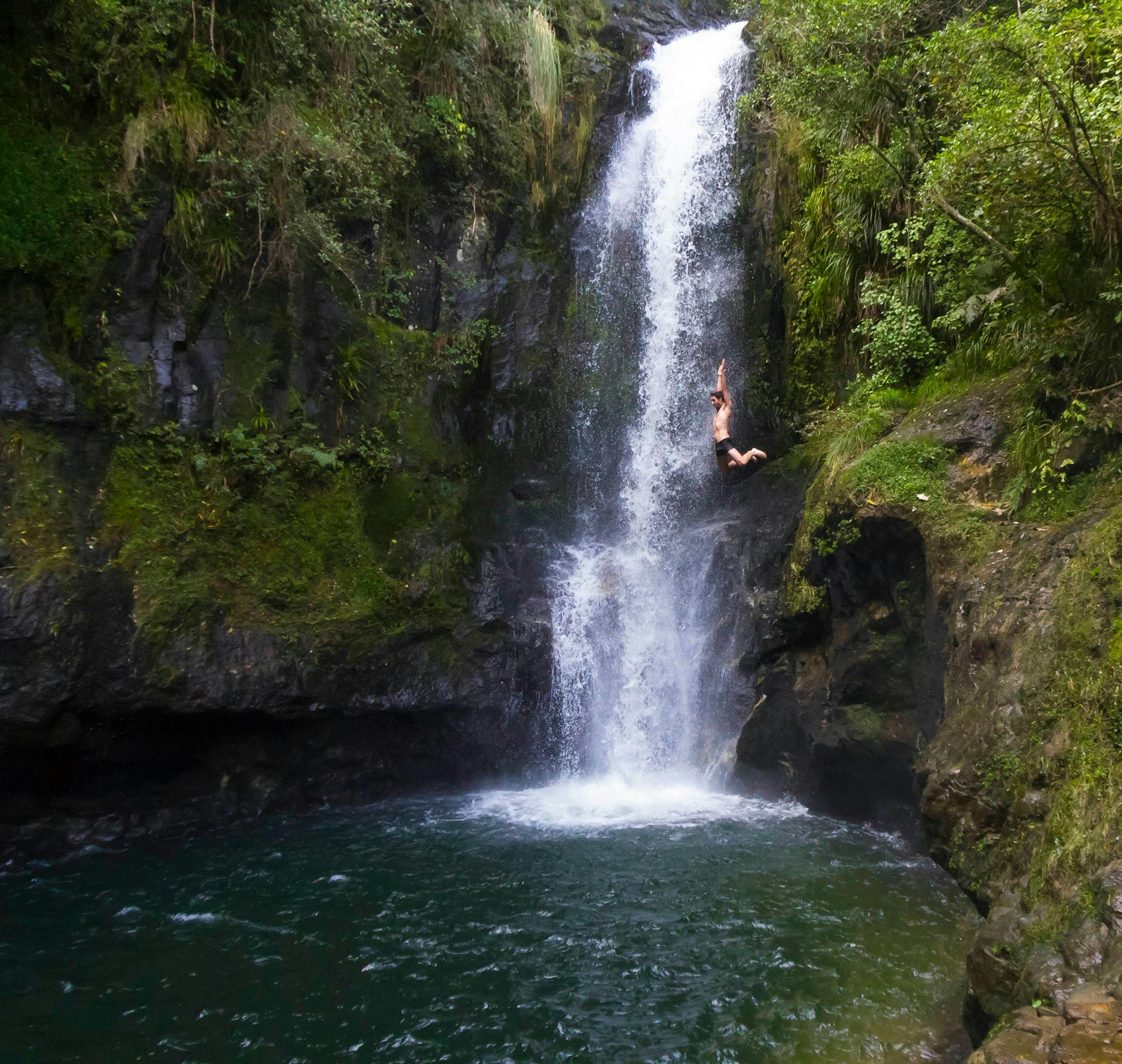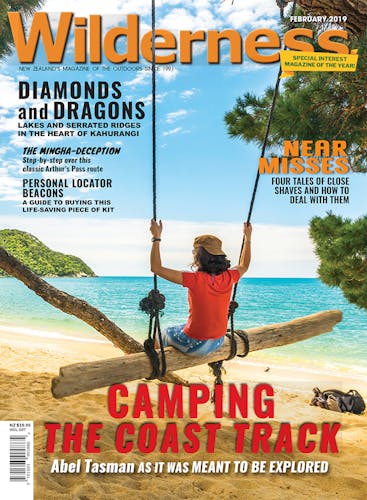Stick within your limits and practise your technique, and cliff jumping can be a thrilling experience in New Zealand’s waterways.
Is there anything so stirring to bravado as a high jump into water?
The rush of acceleration, the stomach’s queasy lurch, the shock of the plunge, and finally the gasp and holler of relief – it’s a feeling that never gets old.
For many Kiwis it’s a rite of passage, a show of independence and bravery. Children learn the knack young, bombing the school pool when teachers are distracted, and teenagers seek out impressive heights, to their mothers’ distress.
As with any outdoors pursuit, jumping into any body of water – be it lake, river or ocean – comes with risks. The last decade has seen 12 deaths attributed to jumping or diving into rivers alone – most of whom were male, aged 15-24.
Water Safety CEO Jonty Mills says a healthy fear of water is important, but often lacking in Kiwis.
“Having a small fear of anything is good if it makes us stop and think,” he says. “I don’t think there is enough of a fear or respect of water, and the fact that it can harm you. It’s perceived as a playground.”
New Zealand drowning statistics show that most preventable drownings are due to bad decision making, and water safety often starts before anybody gets wet.
Stick to your limits, check what’s under the surface, identify an exit point, and understand your environmental conditions – especially in rivers, Mills advises.
“Rivers are a particularly unique environment. They’re extremely changeable and unpredictable – what might be a well-known and safe swimming spot one day can change considerably with a change in weather.”
Matt Laity, founder of the annual New Zealand Bomb Comp at Lake Tikitapu in Rotorua, says a safe jump is all about technique.
“You want to keep your weight forward, and mind your take off point. You do not want to slip on take-off, and if a jump spot is used often, there’s a good chance it will be wet,” he says.
Rope swings are a different ball game altogether, Laity says, and timing the release is key.
“Make sure you let go the first time you swing out. I’ve seen people get absolutely smoked letting go at the wrong time. Once you swing, you have got to commit,” he says.
Four jump spots for summer
Little Thailand, Queenstown
Ten minutes’ drive from Queenstown on the Glenorchy-Queenstown Road, you’ll find a cliff jumping spot known to locals as Little Thailand. Follow the trail from the road to find a 15m plunge into bracing Lake Wakatipu. A lower ledge provides an easier – and safer – jump.
Bulli Point, Taupō
Bulli Point marks the northern end of Motutere Bay, and is located on SH1 between Taupō and Turangi. Park in the gravel car park opposite the lake, carefully cross the road, and enjoy this popular leap into Lake Taupō. There are three ledges to leap from ranging up to 7m, making it a good spot for beginners to build confidence.
Back Beach, Taranaki
New Plymouth’s answer to Matapouri’s Mermaid Pools are a mission to get to, but worth the effort. From Back Beach, swim ‘Shark Alley’ between Mataora and Pararaki islands – but be wary of currents – and walk to the seaward side of Pararaki to find a deep rock pool, flanked by a 5-6m jumping rock.
The Cove, Auckland
Dubbed ‘The Cove’ by locals, a small bay breaching the cliffs at the northern end of Red Beach, Whangaparaoa, is a renowned high tide jump spot. Generations have grooved steps into the cliff, and a rope swing is often set up from an overhanging pohutukawa, which can also be jumped out of. If you get lost, ask a local.








